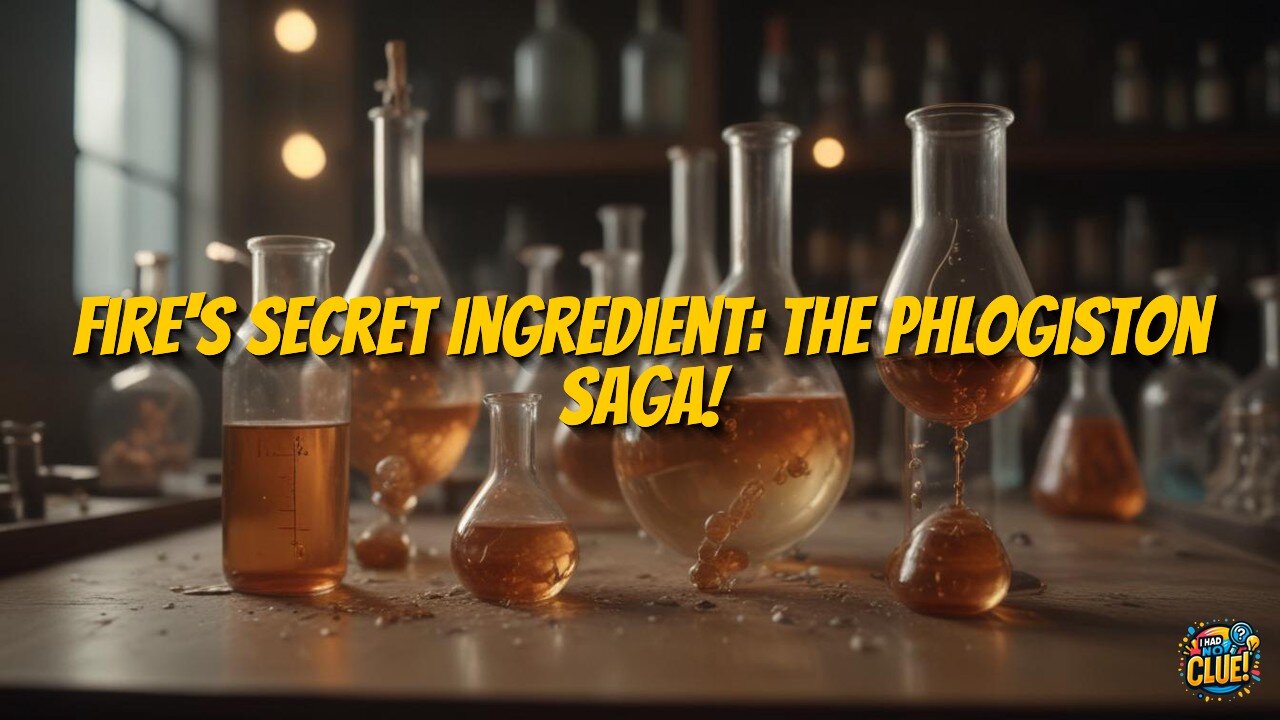Premium Only Content

The Curious Rise and Fall of Phlogiston Theory
https://www.ihadnoclue.com/article/1079179457940717569
The phlogiston theory, proposed by Johann Joachim Becher in 1667 and refined by Georg Ernst Stahl in 1703, was an early attempt to explain combustion and related phenomena through a unified framework. This theory posited that flammable objects contained "phlogiston" (meaning "burning") that was released during combustion. For nearly a century, this theory dominated chemistry, elegantly explaining why fires extinguished in enclosed spaces and why metals transformed to powdery calx when heated. However, contradictions emerged—particularly that some metals gained weight when burned, contradicting the idea that they were losing something. Despite increasingly convoluted explanations to save the theory, Antoine Lavoisier disproved it between 1772 and 1783 through meticulous experiments demonstrating that combustion involved the combination with oxygen rather than the release of phlogiston. The Chemical Revolution paradigm shift illustrates how scientific theories persist despite contradictory evidence and how science ultimately corrects itself through rigorous measurement and testing.
-
 UPCOMING
UPCOMING
Badlands Media
5 hours agoBadlands Daily: November 3, 2025
3.84K1 -
 LIVE
LIVE
Wendy Bell Radio
5 hours agoThings Will Get Worse Before They Get Better
7,987 watching -
 1:08:17
1:08:17
Chad Prather
8 hours agoHow to Get Along With People You Don’t Even Like (Most of the Time)
49.3K13 -
 1:45:29
1:45:29
MTNTOUGH Podcast w/ Dustin Diefenderfer
7 hours agoTaya + Colton Kyle: Can American Marriages Survive 2025? | MTNPOD #140
95 -
 1:12:23
1:12:23
The Bold Lib
15 hours agoSay Something Beyond W/MikeMac: JOKER - Ep.12
50 -
 LIVE
LIVE
LFA TV
16 hours agoLIVE & BREAKING NEWS! | MONDAY 11/3/25
3,299 watching -
 1:30:13
1:30:13
Game On!
13 hours ago $6.64 earnedChiefs Dynasty OVER, New Longest FG RECORD, and Patriots Are Winning The Super Bowl!
18.1K2 -
 LIVE
LIVE
The Bubba Army
3 days agoIS AMERICA OVER TRUMP? - Bubba the Love Sponge® Show | 11/03/25
1,500 watching -
 48:57
48:57
Man in America
18 hours agoThe Sinister Reason They Put Fluoride in Everything w/ Larry Oberheu
362K100 -
 1:06:56
1:06:56
Sarah Westall
15 hours agoAstrological Predictions, Epstein & Charlie Kirk w/ Kim Iversen
99.8K71